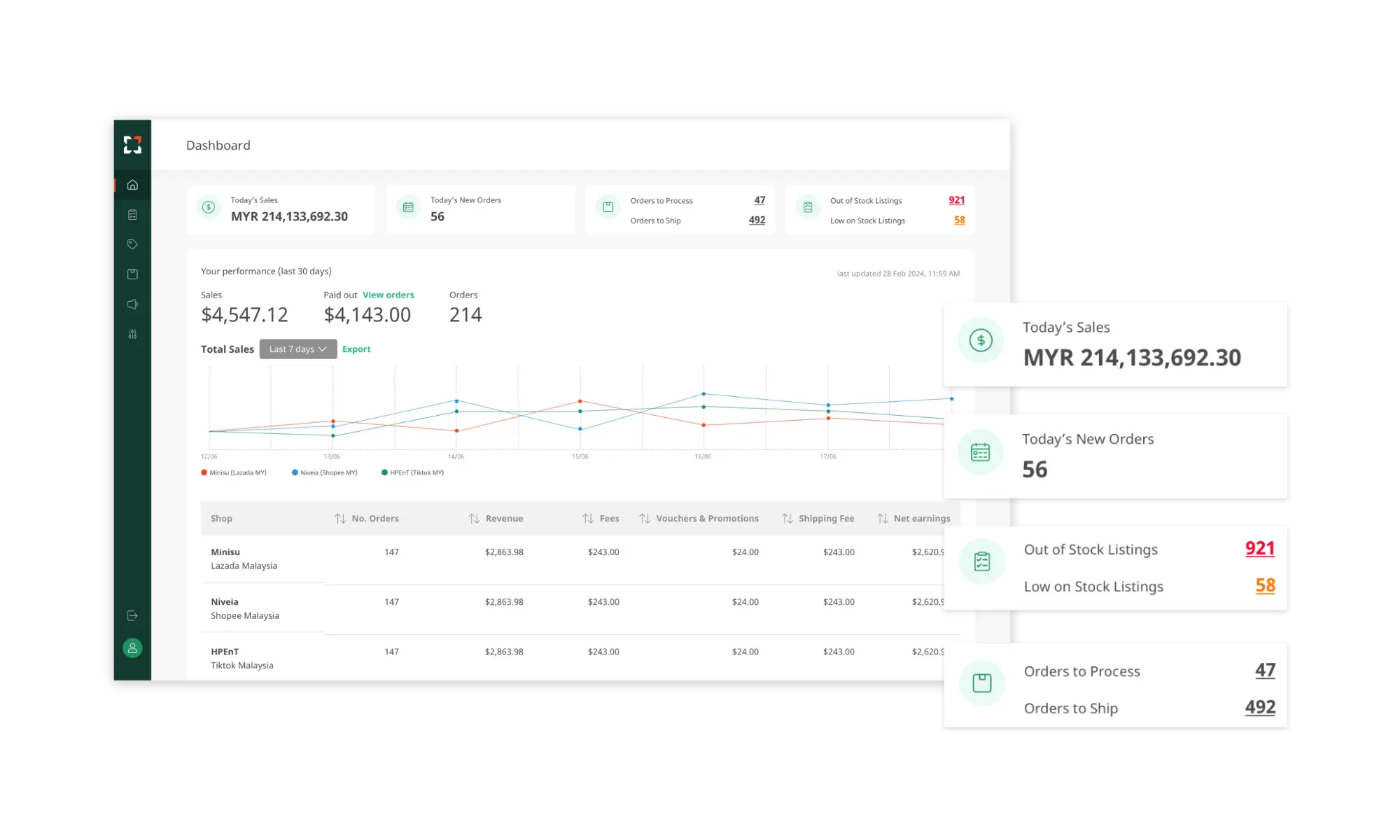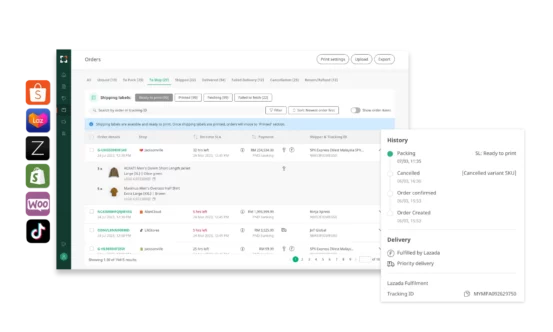Success simplified
on one platform
Simplify your multichannel e-commerce operations with Sellercraft OMS to grow your business and keep your customers happy

Our customers

Make data your business ally
Turn your data into actions and take your business to the next level with our powerful business analytics tool
Supported platforms






Multichannel e-commerce
made easy
Our multichannel management platform optimises inventory and order processing for SLA-compliant stock distribution and bulk processing

156,354
SKUs on Sellercraft
864,285
Items sold on Sellercraft
RM 357,748,940
Total GMV
Find the right plan for you
Basic
For small businesses exploring a new tool to manage orders, product listings and inventory all in one place
Advance
For established businesses looking to manage large-scale operations efficiently with bulk processing capabilities
Enterprise
For large enterprises with intricate demands and dynamic needs that requires customisation.
News from Sellercraft

Data Integration: The Key to Scaling E-Commerce Success in Malaysia & Singapore

Mastering Multi-Platform Chat Management: Marketplace, Social Commerce & WhatsApp
Hear what our users have to say

It's hard to believe that my shop performance is improving after using Sellerwizard dashboard. It's nipped delay delivery issues, prevented disasters, and maintained our strong customer trust.
Hidayah
Shoesscate

Excellent tool by Sellercraft. Their detailed cost breakdown, including platform fees, keeps us in the loop. Splendid job!
Noor
PW Enterprise

Selling on multiple platforms is smooth with Sellerwizard. Their dashboard's insights give us an edge. We effortlessly analyze sales and marketplace finances, making better selling decisions.
Que
Business owner

Sellercraft streamlines our multi-channel e-commerce operations, saving us time and effort. Their inventory reports are a game-changer, and we highly recommend them.
Jay Yap Wee Kiat, OPS Excellence Lead Momentum Commerce
Get in touch with us
Got questions? We're here to help! Reach out to us for any inquiries, feedback, or assistance you may need.




















